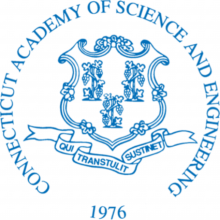(Hartford, CT)—The Connecticut Academy of Science and Engineering has documented a successful demonstration and evaluation period of two New Flyer hybrid-diesel electric buses. The goal of the project was to identify for future fleet replacement the next generation of transit vehicles.
The Connecticut Academy of Science and Engineering report, prepared for the Connecticut Department of Transportation (ConnDOT) and CTTRANSIT, was published in early November 2005. The report concludes that both conventional state-of-the-art diesel buses and hybrid buses have advantages and limitations. The committee suggests that CTTRANSIT continue to evaluate the current hybrid buses, to understand their performance in extended service, and to continue to investigate (and perhaps purchase) a few additional newer design hybrid buses.
Results of the 18-month testing showed that the hybrid buses demonstrated an improvement in fuel economy, compared to the base clean-diesel buses. Averaged over the entire test program, the improvement was about 10%. The buses were popular among passengers and operators, who cited their quiet, vibration-free ride. The hybrid buses’ initial reliability performance has met and exceeded expectations. There were no apparent significant problems, despite the fact that these buses are of new design, and are early in the product cycle. Emissions for both the hybrid bus and the compared clean diesel bus were found to about the same; both significantly cleaner than average emissions from older buses in the CTTRANSIT fleet.
Beginning July 1, 2003, the hybrid buses and comparison diesel buses underwent in-depth testing of fuel economy, reliability, maintenance expense and emissions, conducted during a threepart period. They were run on regular #1 diesel fuel during the first phase of testing, then were switched to ultralow sulfur diesel fuel to determine emissions during the second phase. Finally, CTTRANSIT conducted its third and final testing phase by adding a special diesel particulate filter to the test vehicles.
During the testing period, the two buses operated on regular routes in the Hartford and Stamford areas. While most emissions testing is conducted in a laboratory, this program utilized innovative mobile in-vehicle emissions testing, making results more real world, according to Stephen Warren, assistant general manager of maintenance services for CTTRANSIT.
The demonstration and evaluation project was a collaboration of many organizations, including ConnDOT’s Bureau of Public Transportation and Division of Research, the Connecticut Academy of Science and Engineering, New Flyer Bus Company, Allison Electric Drive, Horiba Instruments, the East Coast Hybrid Consortium, the University of Connecticut and CTTRANSIT.
Results of the reports will be shared with the transit community, with the hopes that, in collaboration with results of other testing projects, this study will assist the industry with future decisions. Sharing results of demonstration and evaluation projects such as this proves beneficial to the entire U.S. bus community, as well as to the state of Connecticut. Follow-up studies are also recommended, and the University of Connecticut has submitted a proposal to do emissions testing on a “next generation” series hybrid in 2006.
Copies of the summary report are available from Stephen Warren by calling 860-522-8101 ext 223 or emailing swarren@cttransit.com.
###

